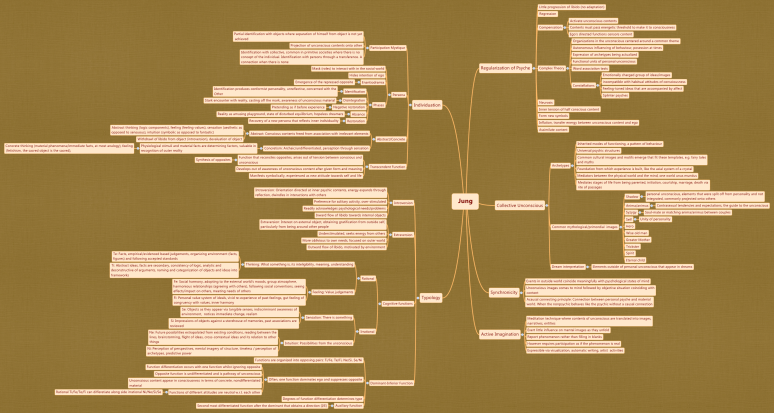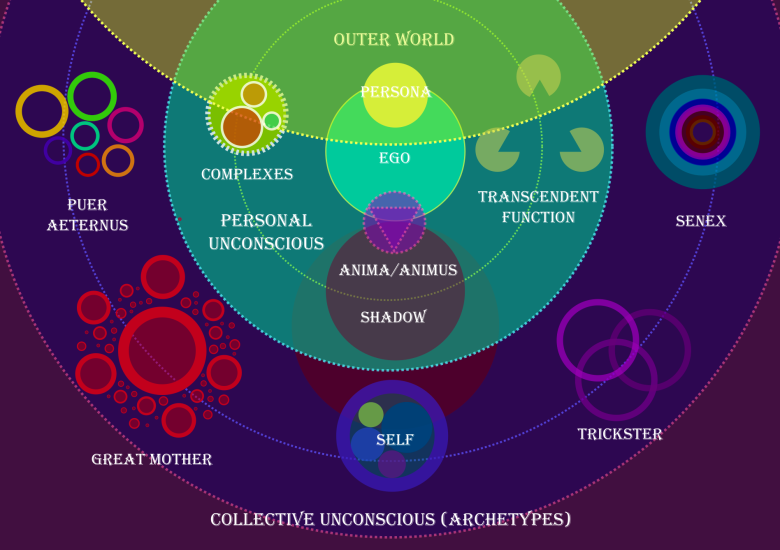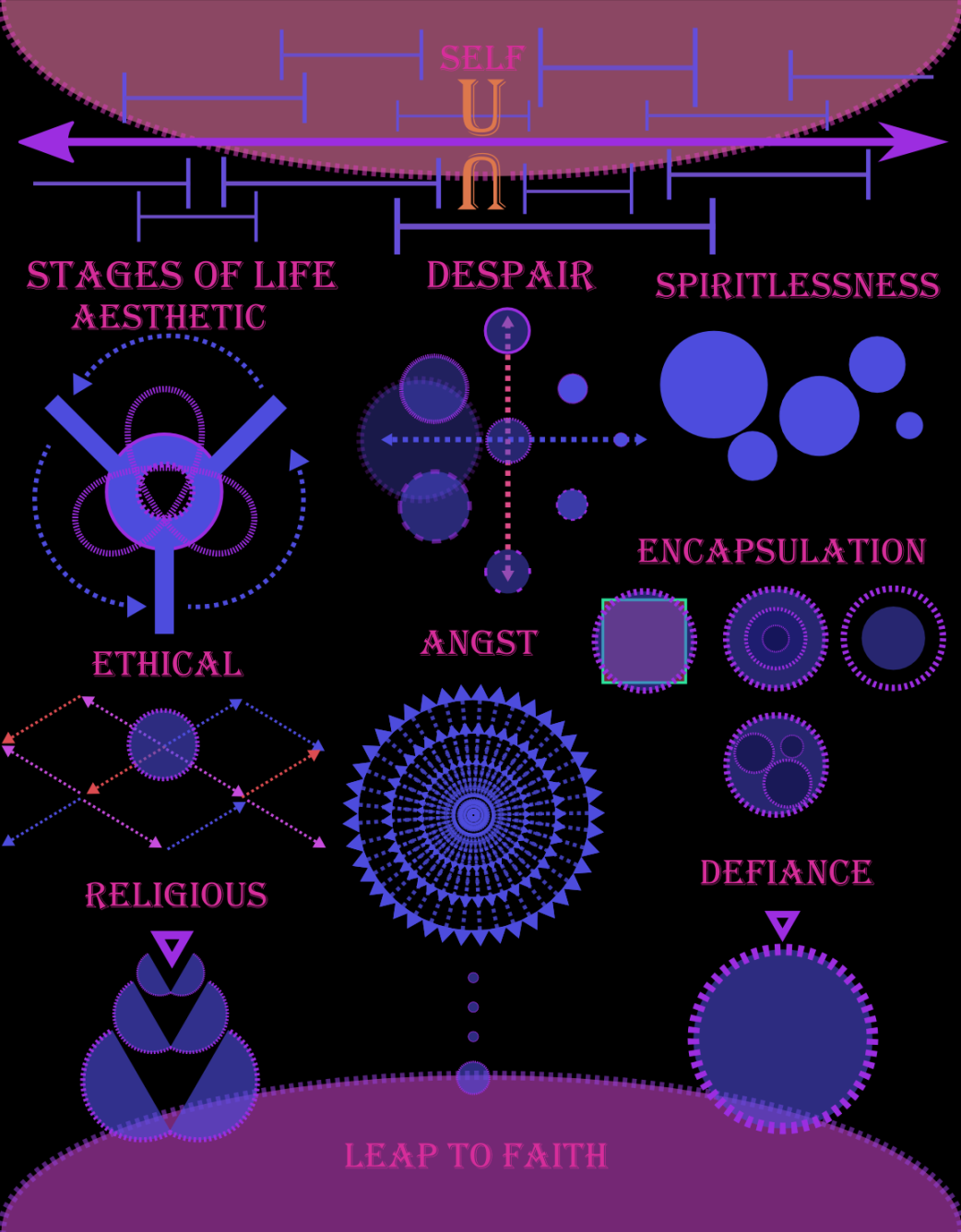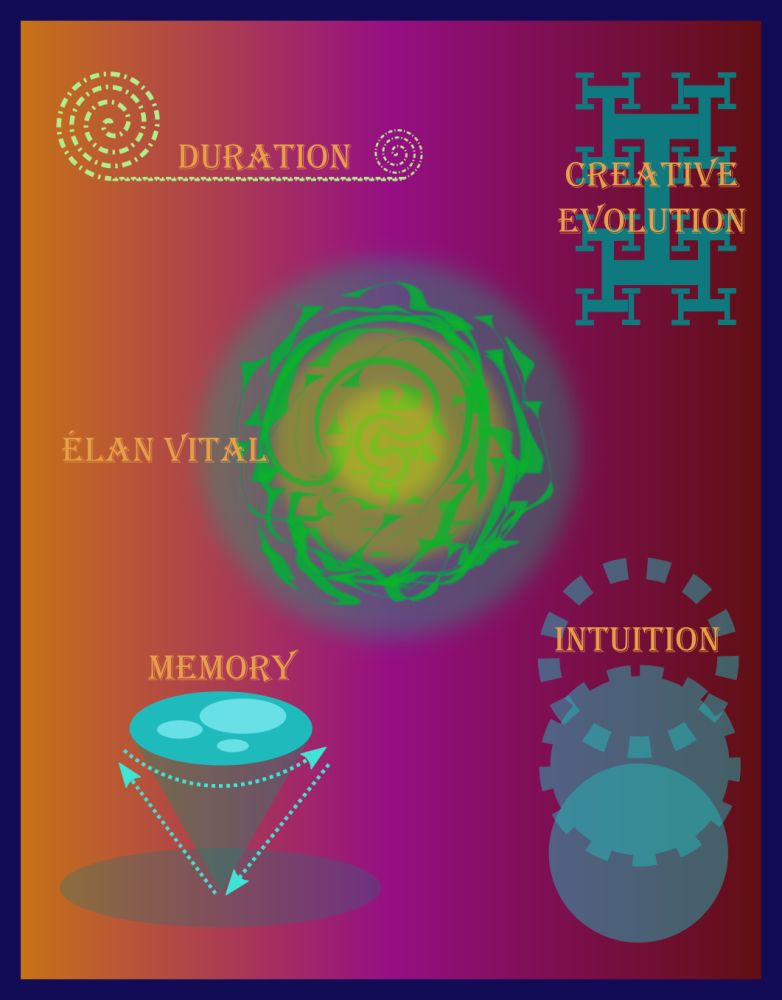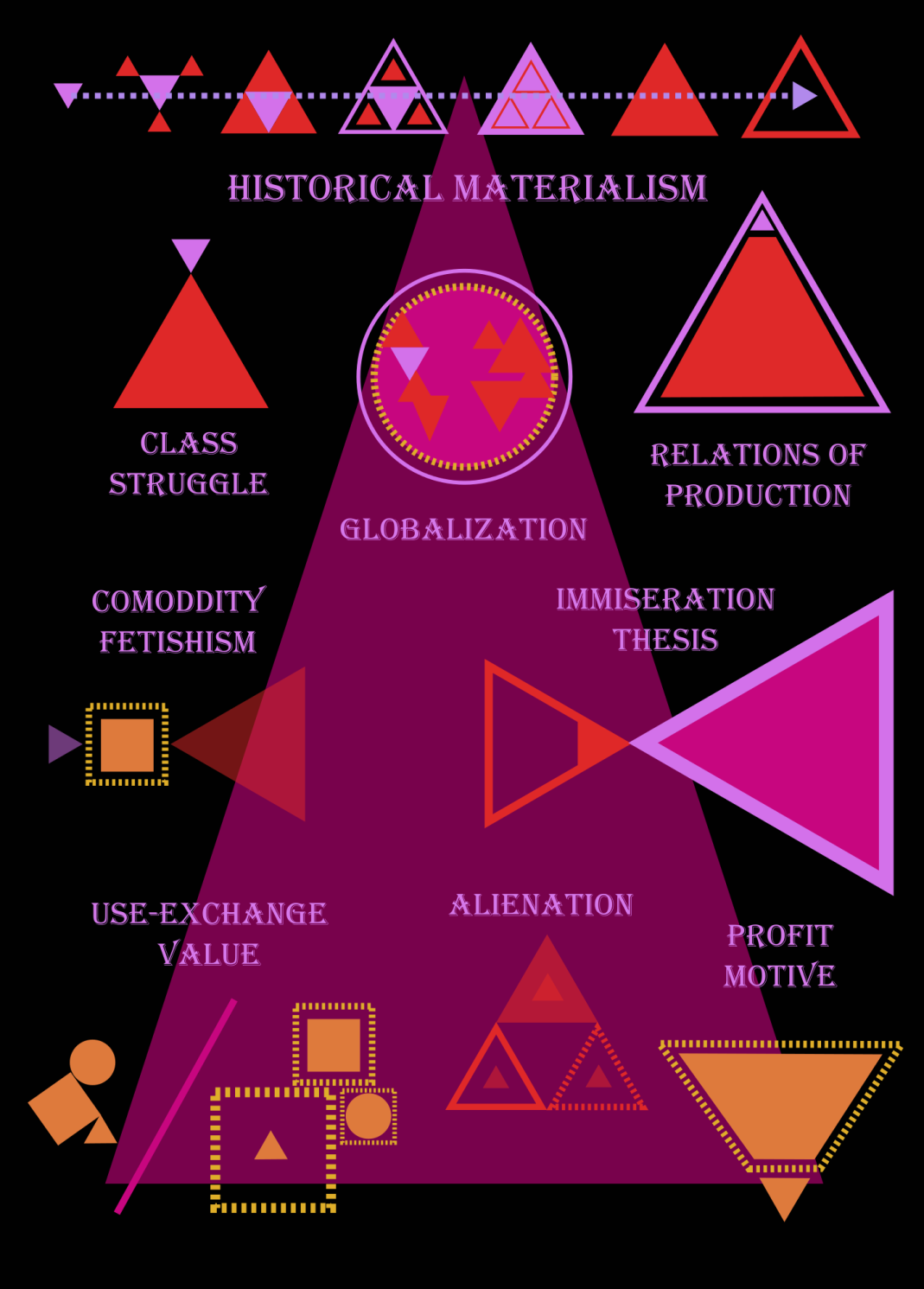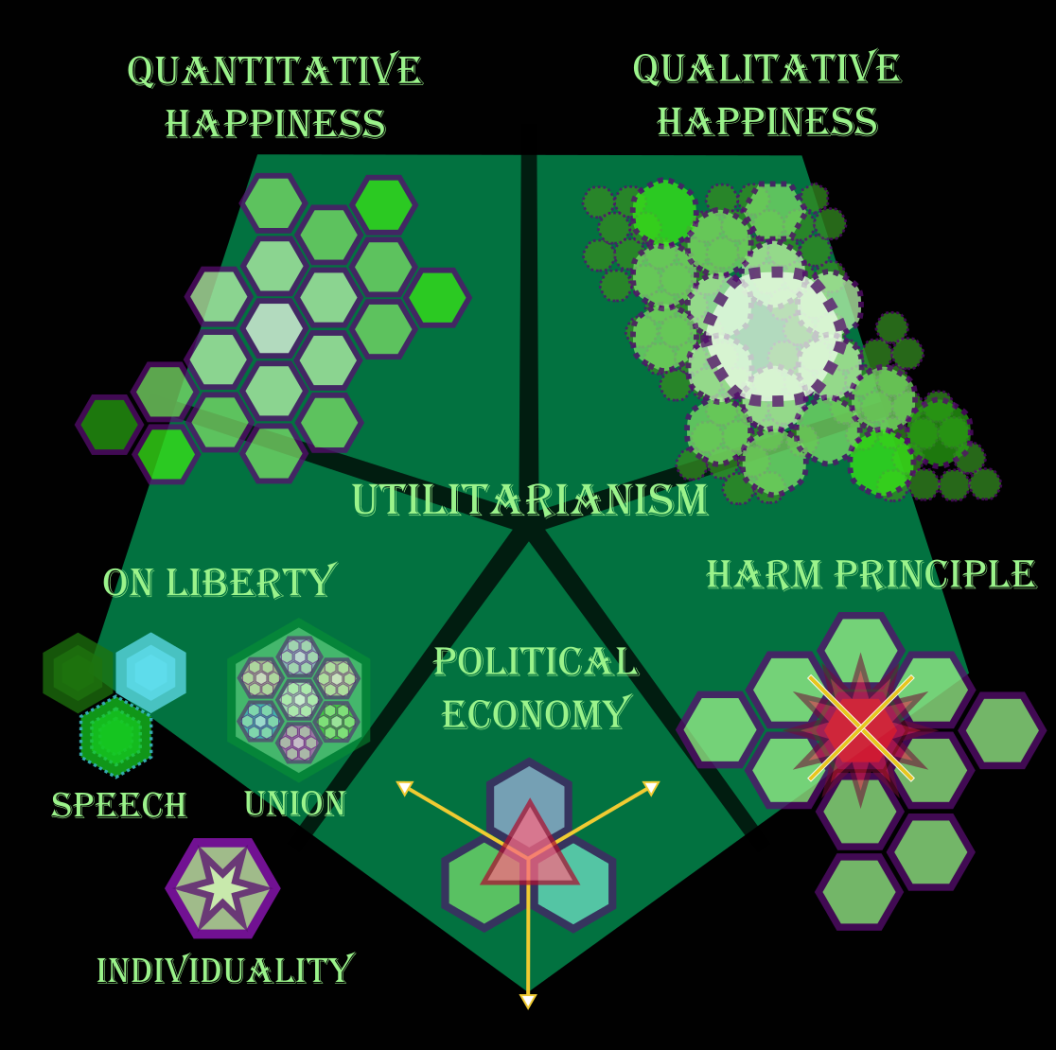Jung, the father of analytical psychology, proposed a model of the human psyche that is constituted by a number of collective, universal, and impersonal structures. The system of structures, dubbed the collective unconscious, is inherited by all of mankind and contains a number of a priori forms or archetypes which are give shape to psychic contents or primordial images that are perceived. Archetypes are thus the psychic counterpart to animal instinct but which cannot be perceived per-se but can be actualized through the encounter with the outer-world; the production of images, symbols, and cultures are the expression of archetype by individuals. Another perspective is to liken archetypes to attractors in a dynamical system where mental states evolve in typical fashions; mental states initially representing sense data are transformed, according to their position in phase space, into factors along a common basis. For example, the archetypal mother may configure the early experiences of breast-feeding and physical contact into a representation of a nurturing individual which is then projected onto agents who behave similarly (e.g. the biological mother, nanny, social worker). Furthering the analogy, a set of images may be clustered around a common set of themes (i.e. complex) much like how basins of attractions have stable orbits about a number of centers; the existence of such centers are only known via the arrangement of images or by the orbiting trajectories. Thus, Jung sought evidence of the archetypes through the exploration of common primordial images, close to their archetypal centers, that have independently emerged in individuals, historical text, and primitive cultures.
Positing the existence of archetypes-as-such, Jung divides the unconscious into the aforementioned collective unconscious and the personal unconscious that extends Freud’s concept of the unconscious and complexes. Recall that Freud developed his theory of the Oedepus complex, which is a person’s psycho-sexual development that is responsible for adult defense mechanisms, integration into society, and the formation of culture. Jung generalizes the complex into any pattern of affect-ladden emotions, memories, perceptions, and wishes centered around a common theme, namely an archetype. Moreover, complexes are energetic or semi-autonomous enough to interfere with the ego-complex, the center of ordinary everyday consciousness. This departs from Freud’s fixation on the Oedipus complex by attributing neurosis or psychological disturbances to a multiplicity of complexes beyond childhood sexual factors. Another consequence is the lack of unity in consciousness by the ego as the will or human agency may be usurped by a multitude of complexes vieing for actualization. Although such loss of agency is commonly viewed as a negative in the modern West where the ego is encouraged to differentiate, one must recognize that the ego differentiates in its reconciliation of tensions created by the competing impulses of complexes and their interplay between archetypes and the outer-world. Thus, it is worthwhile to elaborate on several major archetypes, how they activate as complexes, and their light/dark sides in relation to the ego (acceptable vs unacceptable by ego).
- Shadow: The not-I qualities of the ego that are unknown, repressed, suppressed, or disowned. The light-side are a person’s hidden or untapped positive qualities which have not yet been realized. The dark-side are the destructive aspects which the ego cannot accept about the self. In dreams, they appear as dark figures that actively undermine our values. Individuation or the integration of disowned parts of the self begins with the shadow and never ends over the course of life.
- Persona: The social mask crafted to leave a particular impression on others whilst concealing the ego from others. The light-side is social flexibility or the first-steps that the ego needs to engage in different outer-spheres of life. The dark-side is ego-identification which creates a conformist attitude to the social role and the loss of individuality (other aspects of self).
- Anima/Animus: Contra-sexual personifications, infatuation/possessiveness of other sex. Anima qualities include the need for emotion and relatedness to others but may devolve into irrational moods. Animus qualities include a need for logic, leadership and independence but may devolve into argumentativeness/irrational opinions. In dreams, they serve as guides and communicators to other primordial images.
- Great mother: Nurturing/suffocating, devotion/abandoning, unconditional love/dependence. The light-side is the life-giver who provides sustenance for the young to thrive. The dark-side is the devourer who creates relationships of co-dependency.
- Trickster: Creative destruction (capacity to both create and destroy), rule-maker/breaker, the wise-fool. The light-side is the reformer who supplies new conventions. The dark-side is the sociopath who disregards conventions.
- Eternal child: Potential for growth. The light-side is the divine child who symbolizes novelty, new possibilities, growth. The dark-side is the child-man who refuses to tackle life’s challenges by seeking short-cuts.
- Senex/Chrone: Guardian of culture. The light-side is the wizard/chrone who mentors the young and imparts life-lessons. The dark-side is the devouring father/fool filled with bitterness and stagnation.
- Self: Unity of ego conscious and the unconscious, the pull towards individuation or the integration of personalities into one totality or the self via the transcendent function. The transcendent function is the mechanism responsible for a Hegelian synthesis between the ego and contents of the unconscious. The emergent “third” is a new perspective which the ego is able to absorb.
The ego complex, where the seat of consciousness rests, is the self’s first point of reference and where the archetypal drives are regularized. One can liken the ego to the executive function of the psyche, capable of directing all cognitive processes. Prior to his works on archetypes, Jung devised a system of psychological types (typology) that characterize a hierarchy of cognitive processes or functions in the individual. A cognitive function is a directed process (by the ego-will) which are categorized by several dichotomies.
- Attitudes-Rational (Judging)/Irrational (Perceiving): Rational attitudes are objective reasons and values established over the course of human history in the normative sense of intelligibility. Irrational attitudes are the existential facts that are phenomenologically fulfilled and thus grounded in experience rather than reflection.
- Orientations-Extraversion/Introversion: The movement of libido or psycic energy can either move towards objects in the outer world (extraversion) or be withdrawn and redirected towards other objects within the subject (introversion). Extraversion is extensive in the sense that libido is directed towards multitudes of objects in the outer-world. Conversely, introversion is intensive in the sense that processes are withdrawing libido from only a few objects.
- Thinking: A rational function by which relations between objects that exclude the subject are established according to reason. Thinking represses feeling as it mustn’t exclude possible relations that do not accord with their agreeableness or value to the subject.
- Feeling: A rational function by which relations of worth between subject and object are established according to values. Feeling represses thinking as relations between objects may be given undue attention according to values of worth rather than through reason.
- Sensation: An irrational function by which a thing is made conscious via sense-organs (i.e. realization/facts, physical stimuli, the part). Sensing represses intuition as attention directed towards the realizations (attachment to things that exist or have existed) would categorically exclude things that have not come to pass.
- Intuition: An irrational function by which a thing is made conscious via its spatio-temporal negation (i.e. possibilities, forecasting, gestalt). Intuition represses sensing as attention must keep moving as to apprehend the much larger space of negation; it must not be remain fixated on the realizations.
The differentiation of any one function entails the exclusion of elements from other functions (attitude-differentiation) as well as a decided direction in the flow of libido (orientation-differentiation). Eight differentiated functions are possible in this schema (Ti, Fi, Si, Ni, Te, Fe, Se, Ne, where T/F/S/N and i/e are short-hand for thinking, feeling, sensation, intuition and introversion, extraversion respectively) . However the proficiency gained from differentiating any one function is at the expense (active-repression) of its cognitive opposite which must be compensated in the unconscious by becoming an emotionally charged complex. Differentiating all 8 functions to a high degree is systemically improbable as it require both a world context that did not favor the rewards of one-sidedness as well as an ego willing to detach from its archetypal pre-dispositions. What emerges from this dynamical system in the normative sense is a typology system consisting of a single dominant (most-differentiated) cognitive function, a repressed but emotionally charged inferior function that is halfway in the unconscious (cognitive opposite of dominant function, i.e. Ti-Fe, Fi-Te, Si-Ne, Ni-Se), and two auxiliary functions (functions of different attitude than the dom-inf pair, opposite orientation, less differentiated). The remaining four functions are thought to reside in the individual’s shadow although later followers (Beebe) of Jung have sought to attribute complexes to the expression of cognitive functions along the positional stack. In the spirit of Jung’s complexes, the first four functions of consciousness are thought to be expressions of the hero, good parent, child, and anima/animus archetypes. They are mirrored by functions of their opposite orientation in the unconscious which are expressions of the shadow, senex/crone, trickster, and daemon archetypes. Thus, individuation from the perspective of normative typology and the complex model, can be viewed as the assimilation of the parts of the unconscious by the differentiation of cognitive functions over different stages in life, and through interior work such as active-imagination and dream analysis to give expression to the lesser archetypes.
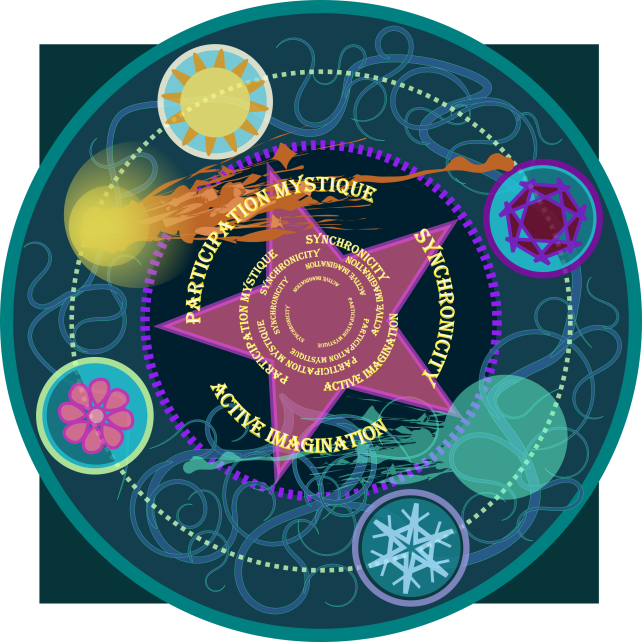
As an addendum, Jung’s later works further extended the role of the collective unconscious into a metaphysical conception of a single world order (unus mundus, monopsychism) where mental and physical phenomenon are united (final causes are inherent rather than unknowable) via the mediation of archetypes. In studies of a primitive’s world-view, the less differentiated ego does not make a clear separation between itself and the object. Other complexes are able to more freely project their contents of the conscious onto objects from which the weak ego enters into a so-called participation mystique. Often, the contents are collective in the sense of having been derived from the culture of the tribe; there is less of an individual than the expression of the a culture/world view through its members. The tight coupling between mental phenomenon and outer events would always appear to be meaningfully related but not necessarily causal (synchronicity). If archetypes have been hypothesized to have a dual nature in both mental and physical realities, then all phenomena would be synchronistic and inter-related. However, it is an unfortunate consequence that ego-differentiation conditions the mind to anticipate a world-view that conceals both the expression and apprehension of such archetypes. Perhaps it is our goal in modern times to find new ways of engaging in such a poetic relationship with the world.
